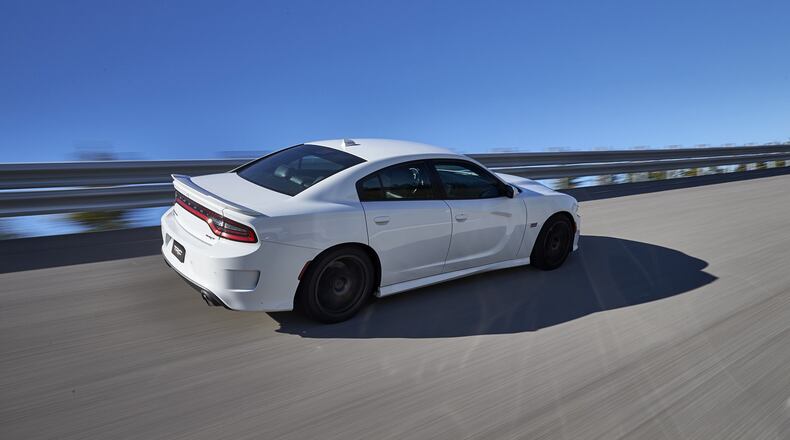Kasich’s proposed 2018-2019 state budget includes funding for high-tech roadway improvements and the expansion of the Transportation Research Center in East Liberty. One of the types of things roadway technology would make possible is variable-speed limits that change based on how congested roads are.
The Ohio Department of Transportation (ODOT) would get $3.3 billion in 2018 and $3.2 billion in 2019 under Kasich’s proposal.
“When you look at the overall budget we are heavily focused on technology,” said spokesman Matt Bruning. “Because for the most part we have built the transportation network in Ohio. Really we are focused on using the system that we have as efficiently as we can at this point and using technology to do that.”
If legislators allow the variable-speed limit program a test would be run as early as summer 2018 on Interstate 670 in Columbus. If that test is successful, the program could expand.
“We know that one of the most common causes of congestion is frequent start and stop,” Bruning said. “If we can get everybody to slow down to a common speed the throughput of traffic goes more smoothly.”
Currently the limit on the proposed test section of I-670 East from downtown to the Columbus Airport ranges from 55 mph downtown to 65 mph in the outer-belt area. It would be reduced to 45 westbound in the morning and eastbound in the evening during heaviest traffic periods, Bruning said.
“People (may) say, ‘I don’t understand why they’ve lowered the speed limit at rush hour. I want to drive 60.’ But the fact is you cannot drive 60 in rush hour,” Bruning said. “We feel, and research proves, that if you lower the speed limit to even 45 everybody gets where they need to go faster because you reduce the stop, start, stop, start.”
ODOT also is proposing that one shoulder of the highway be opened up when congestion is heavy and the speed limit has been lowered. Bruning said the left shoulder would be kept clear of debris to allow motorists to drive on it. The right shoulder would remain off limits to drivers except for emergency vehicles.
Overhead gantries and digital speed limit signs that could be remotely changed would be installed on I-670 so motorists know when they must slow down. Current law allows speed limits to be temporarily lowered only in school zones and work zones.
It’s not clear what reception the idea will get in the Ohio General Assembly.
“Our members will want to see the actual budget bill, and the language regarding that before developing an opinion,” said John Fortney, spokesman for Ohio Senate President Larry Obhof, R-Medina.
Ohio House Speaker Cliff Rosenberger, R-Clarksville, said there will be plenty of review and discussion of the budget proposals.
“But I commend the governor for his vision and for bringing this idea forward,” Rosenberger said. “Anything that has the potential to make our roadways safer and more efficient deserves attention, and that is what the caucus will be looking at in the coming weeks.”
Last week Kaisch, JobsOhio and Ohio State University announced they will partner on a $45 million first phase of a “state-of-the-art hub” for testing automated and autonomous vehicle technology to be built on the site of the Transportation Research Center in East Liberty, Ohio.
The 40-year-old facility is the nation’s largest independent automotive proving ground and is used by the governments and companies to test vehicles under a variety of road conditions, terrain and situations.
The new 540-acre Smart Mobility Advanced Research and Test Center will be built on the 4,500-acre grounds of the existing facility.
The state has also already announced a $15 million investment in the Smart Mobility Corridor, which involves installing fiber optic cable and sensors on a 35-mile stretch of U.S. 33 between Columbus and the TRC this summer. Kasich’s budget adds two additional smart highway projects, I-90 in northern Ohio and the Interstate 270 beltway in Columbus.
The idea is to test emerging technology and be ready to handle an increase in self-driving vehicles and high-tech cars and trucks outfitted to provide data such as information about speeds and roadway conditions like black ice or potholes, Bruning said. ODOT is looking to outfit some of its vehicles with equipment to test how well the sensors work.
Ultimately automotive technology would be tested at the TRC and then moved to the “real world” laboratory of the Smart Mobility Corridors.
“What we are doing is setting up a testing ground,” Bruning said. “Not only do we think this could be a game changer for jobs and the economy but we think this could be a game changer for safety. If vehicles are talking to each other we think it is a lot less likely for them to hit each other.”
About the Author

